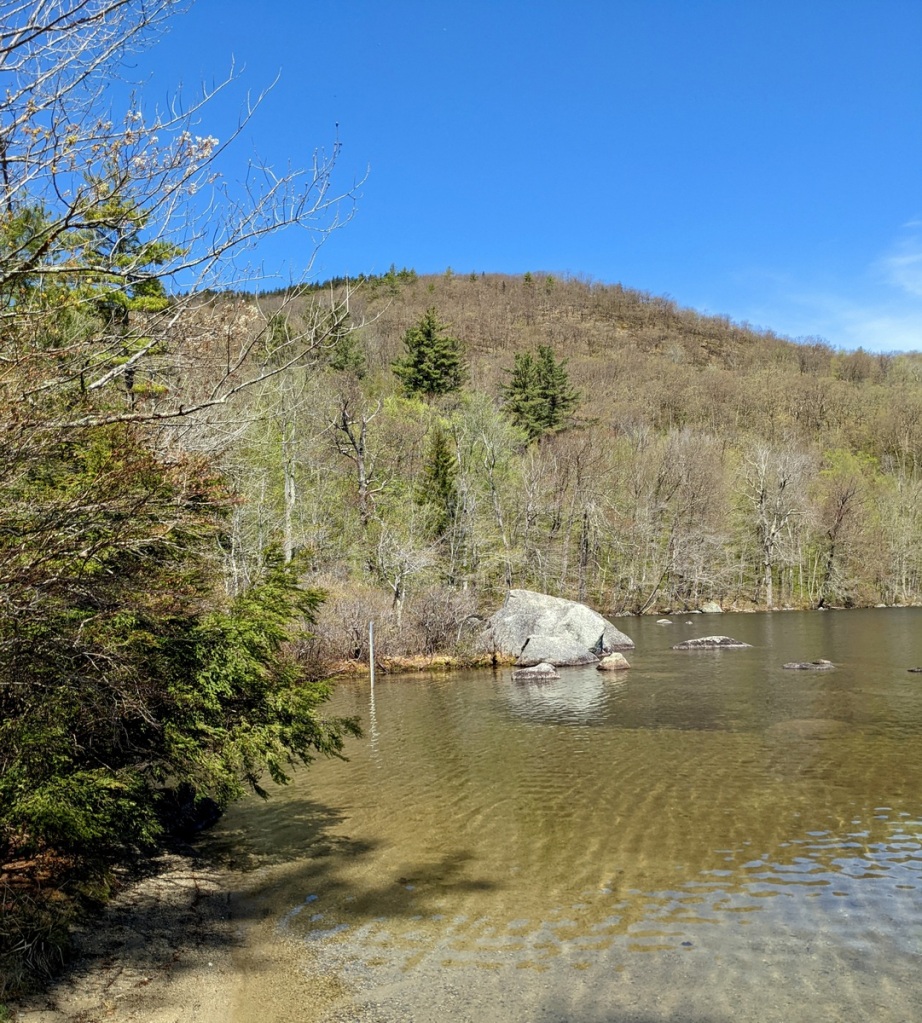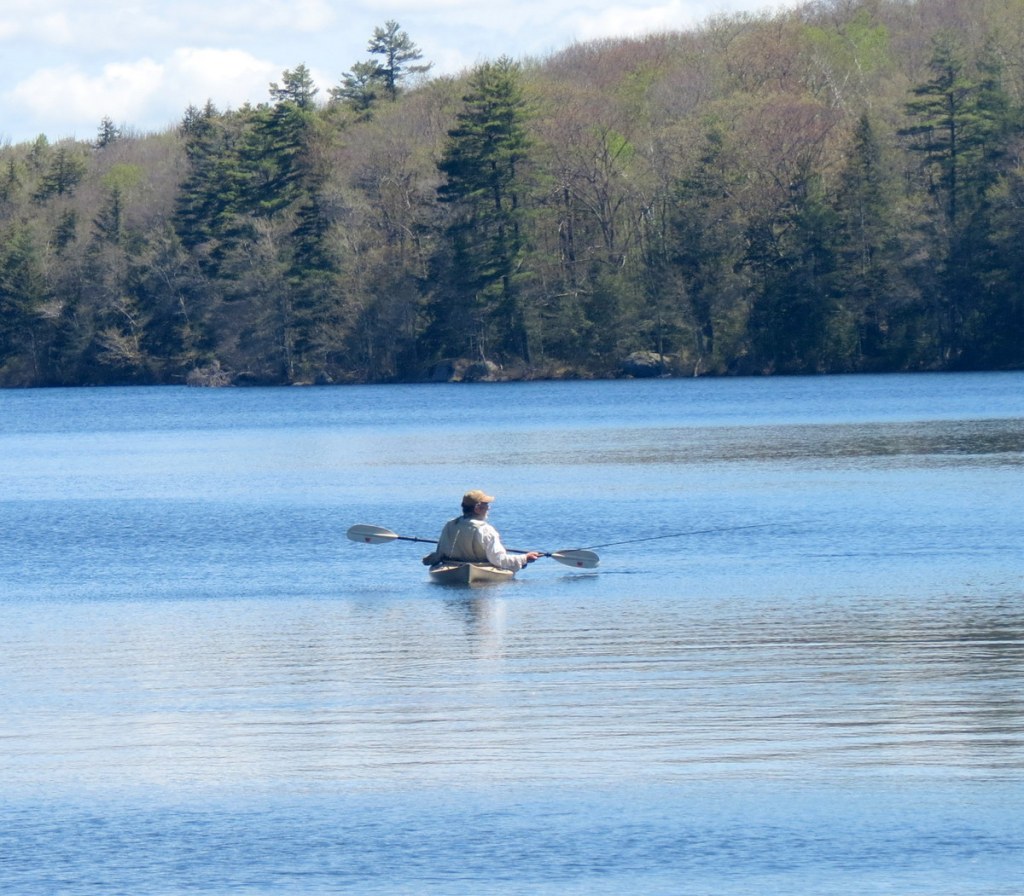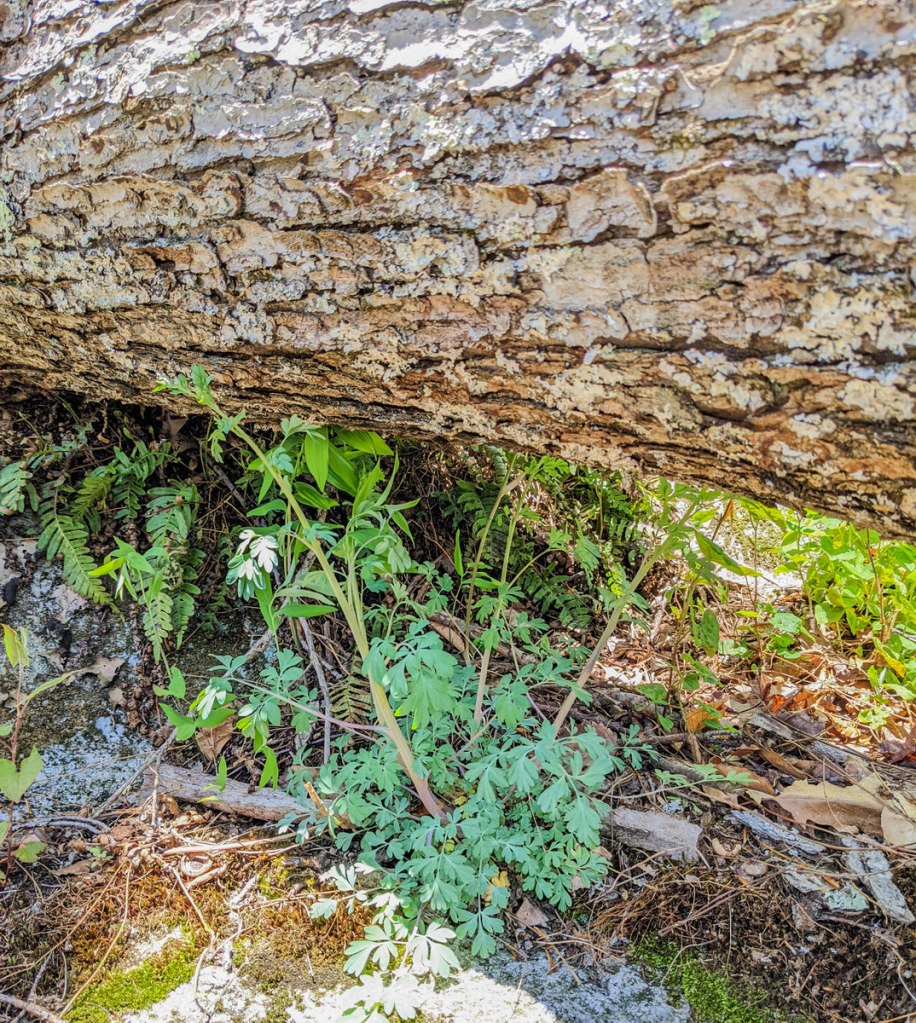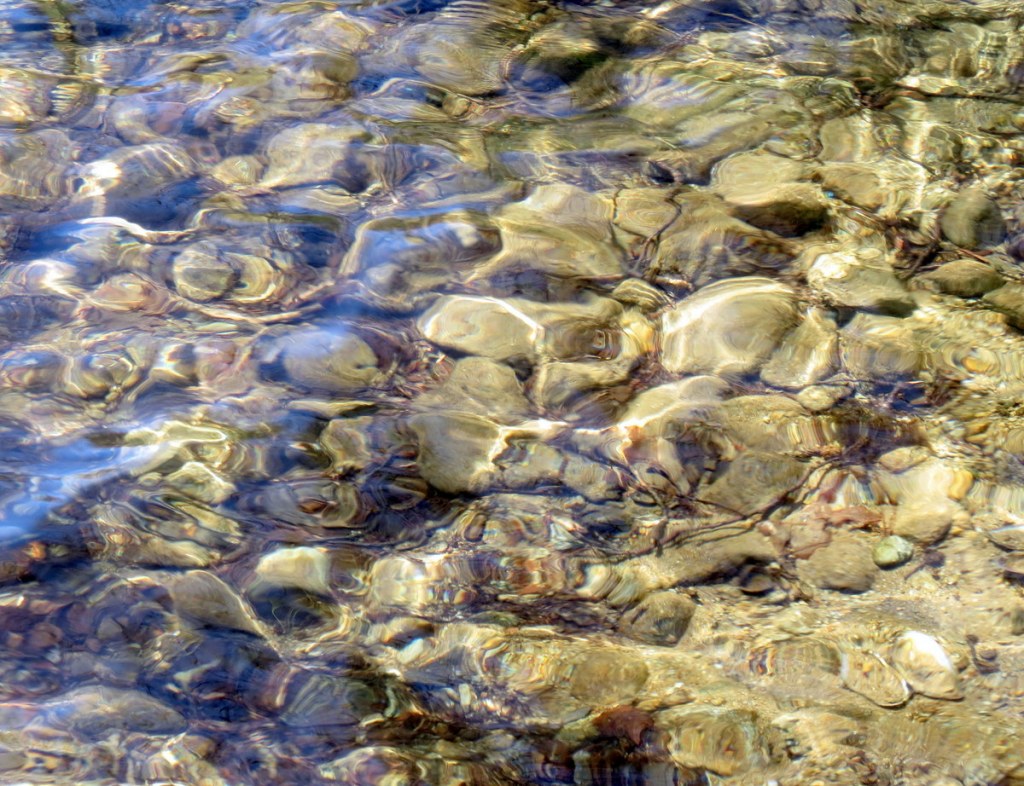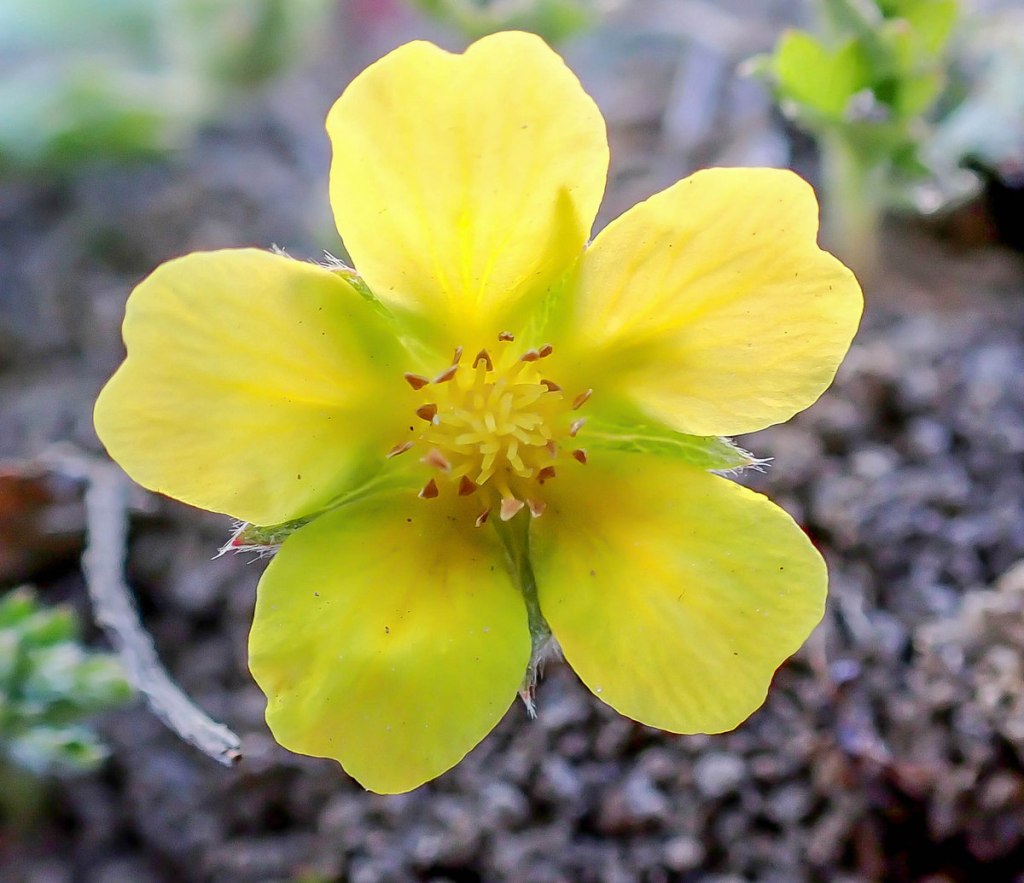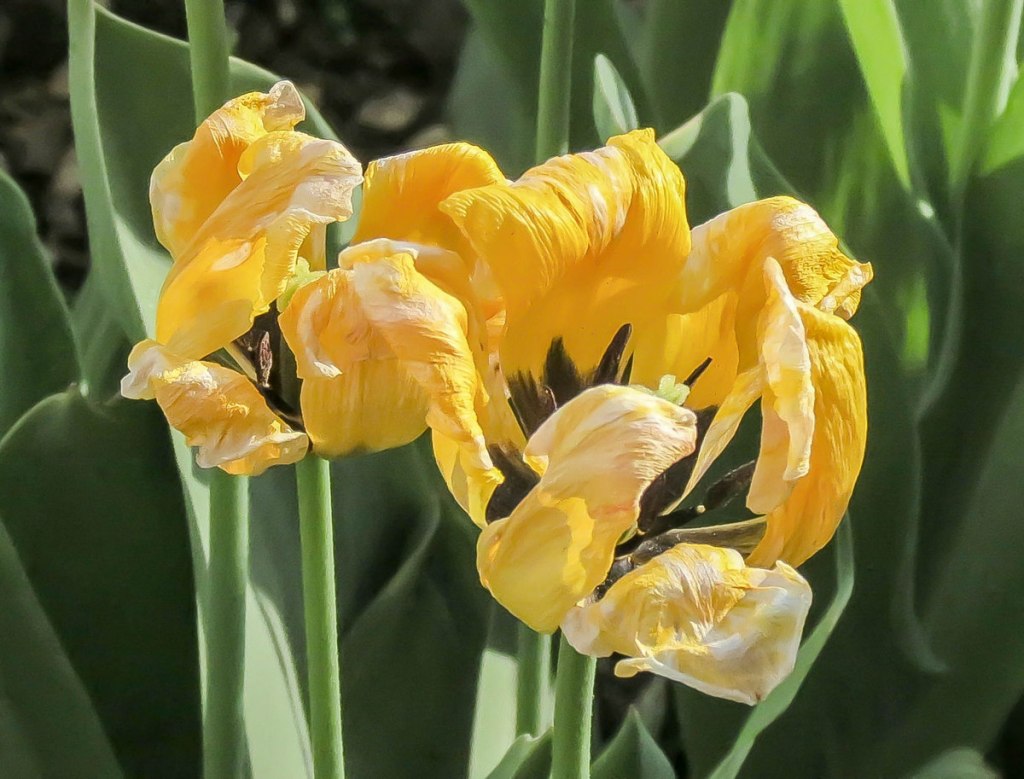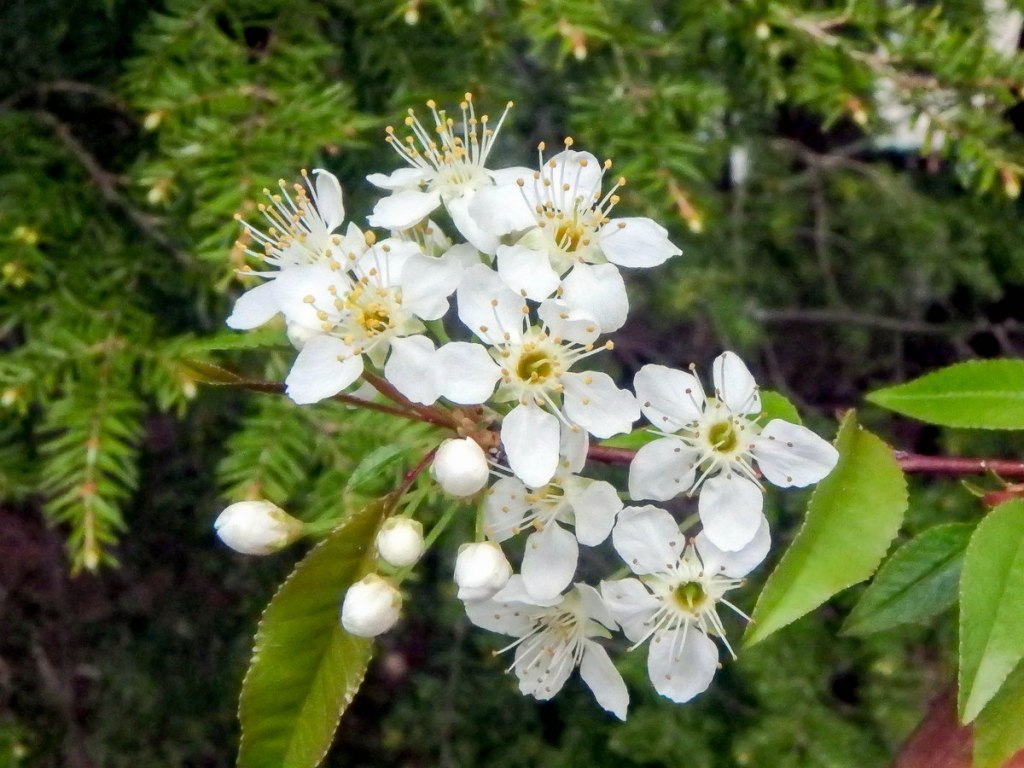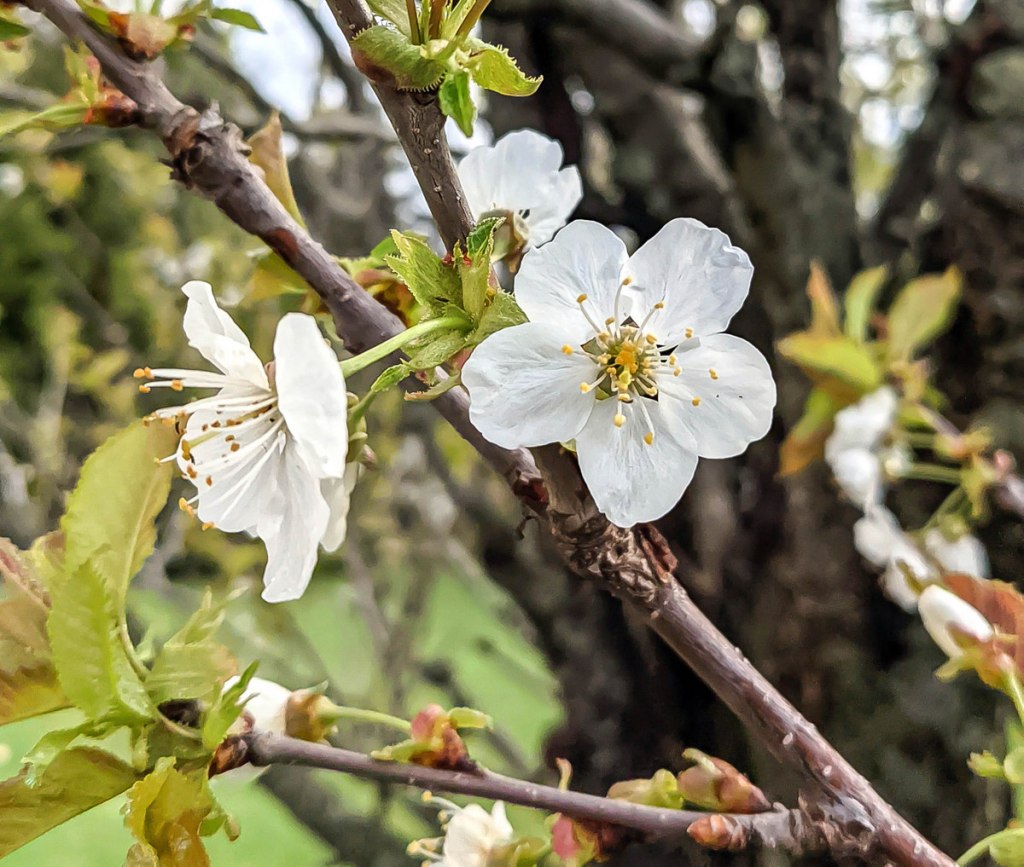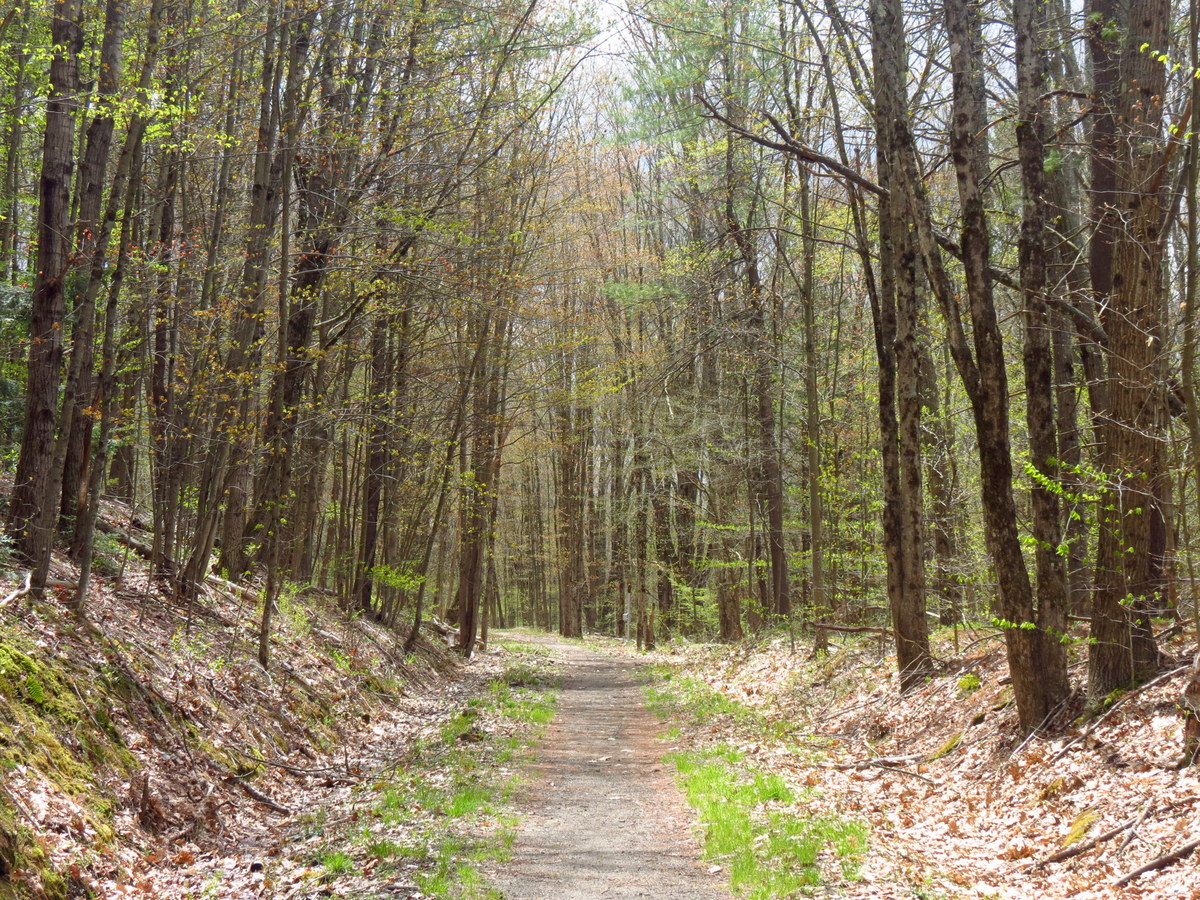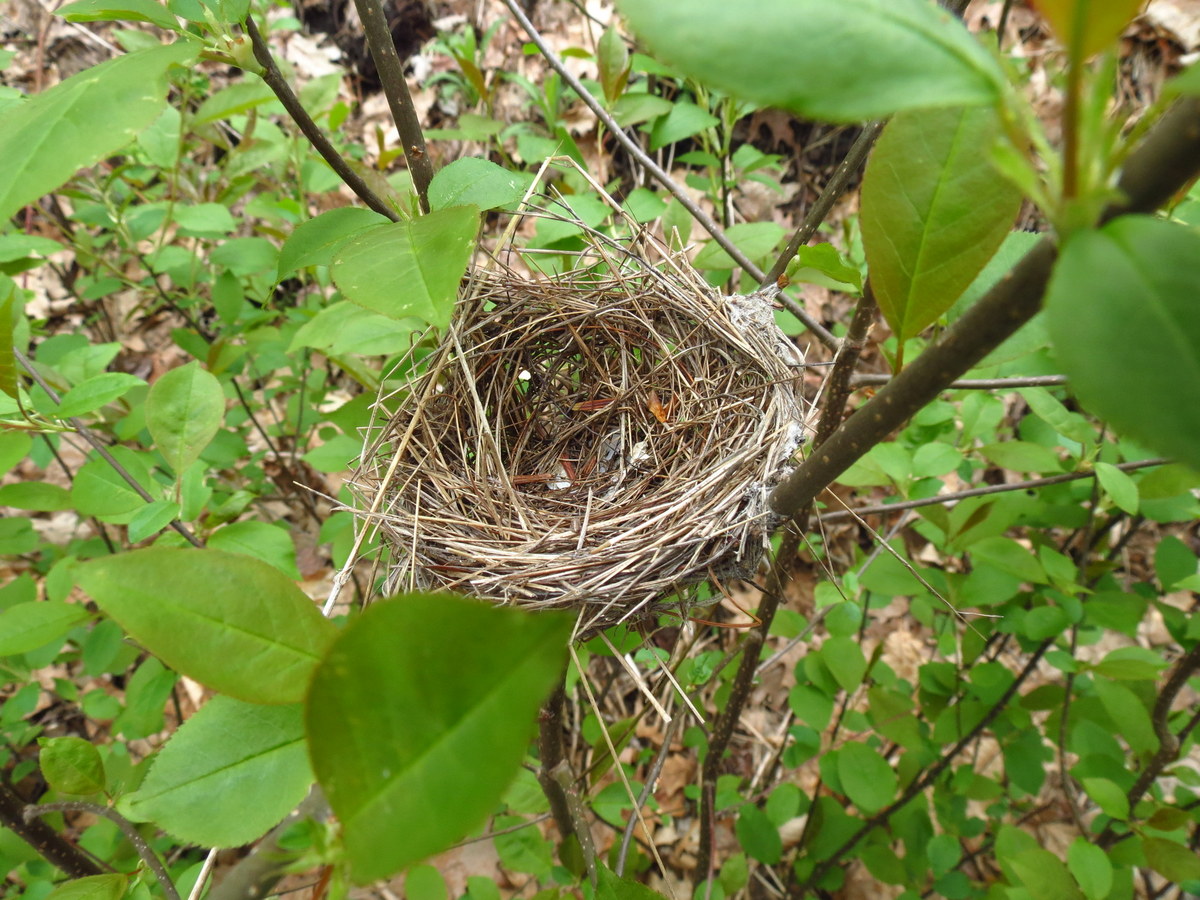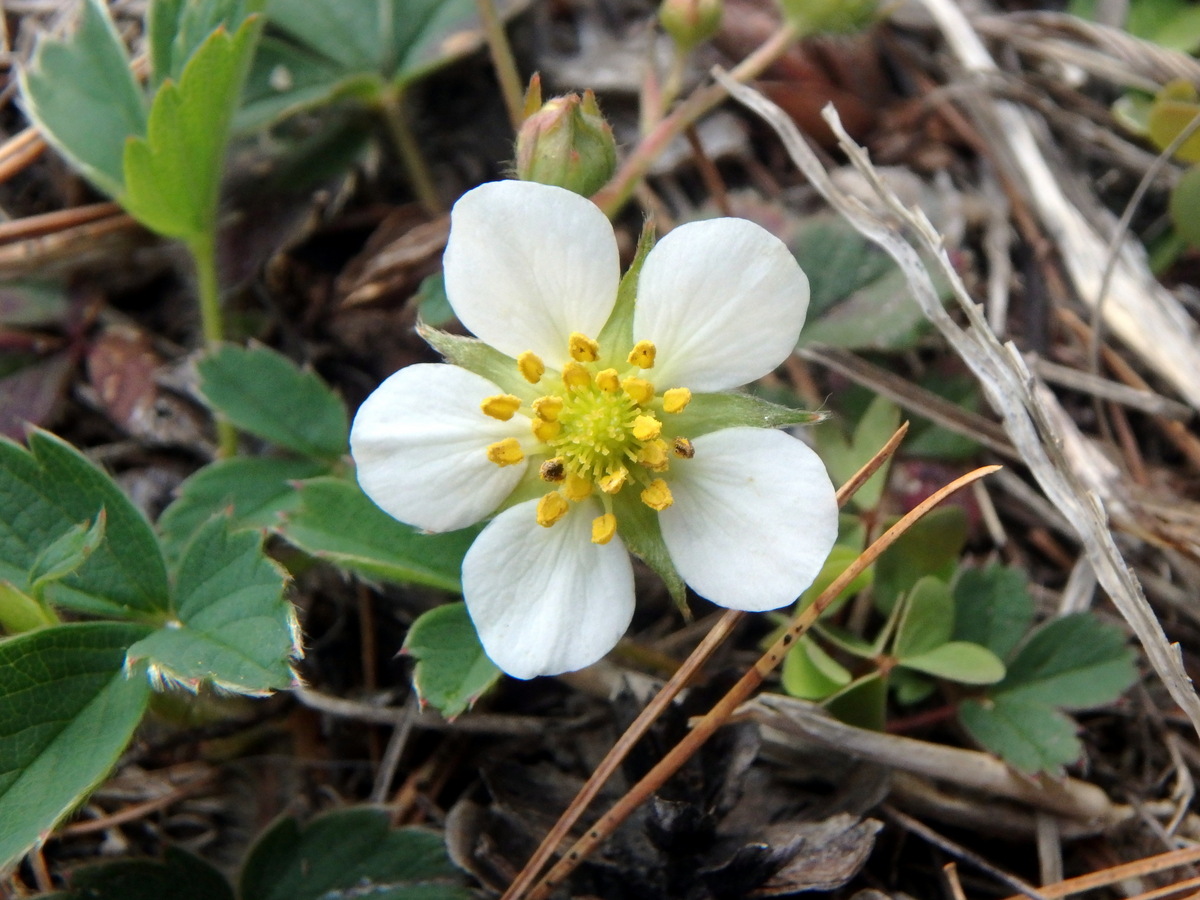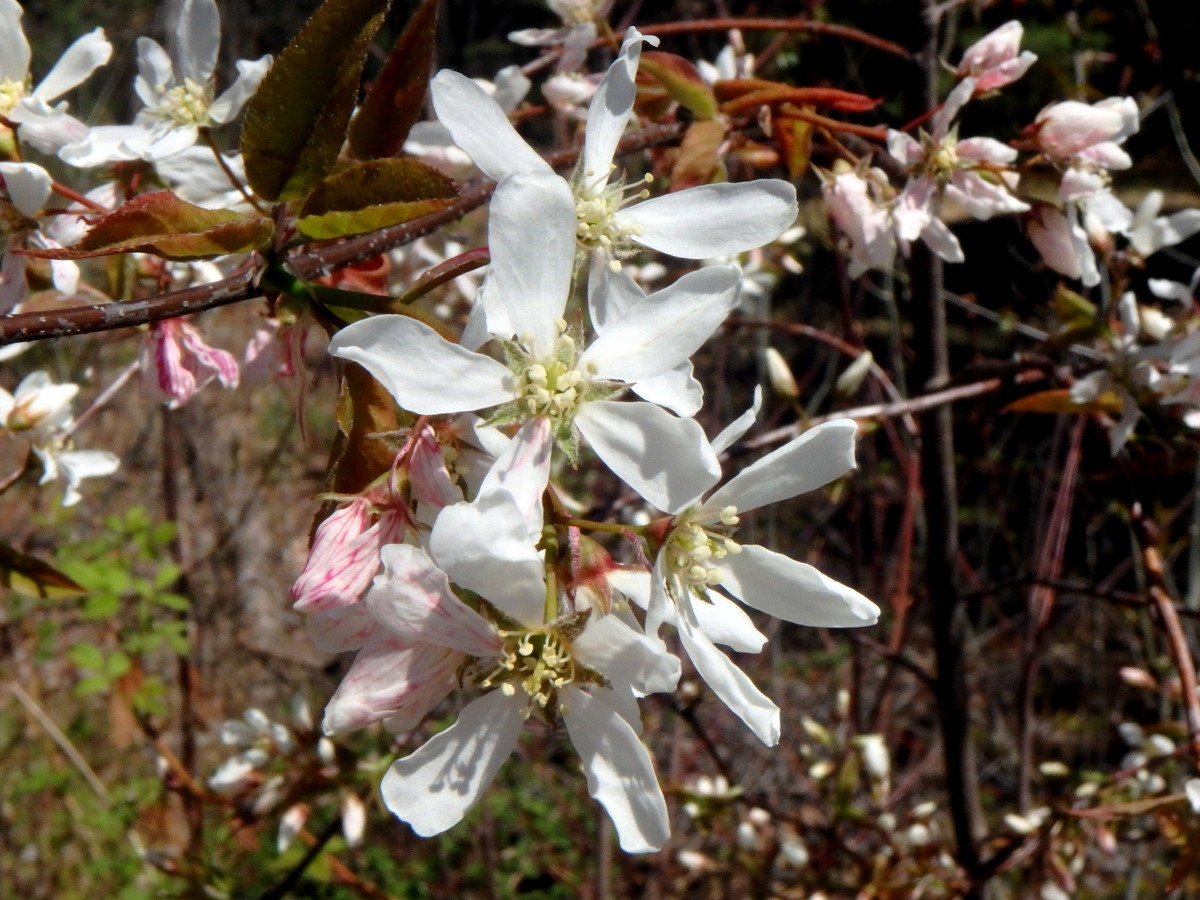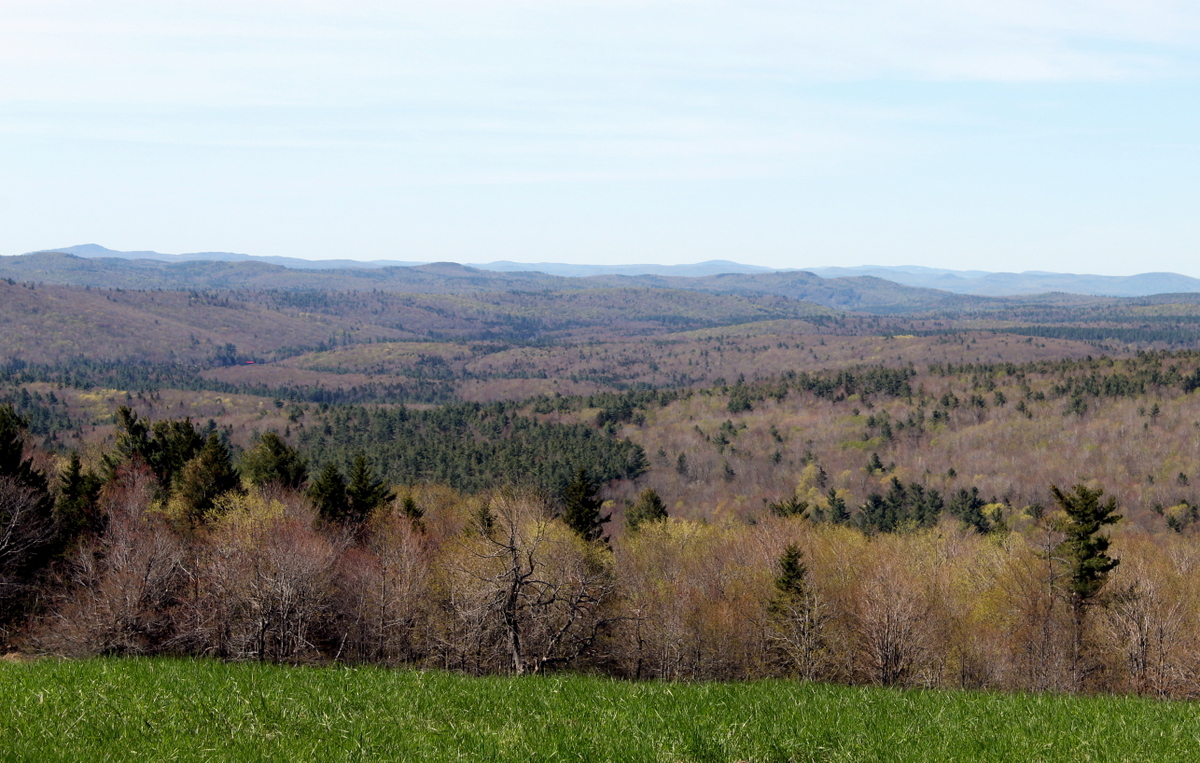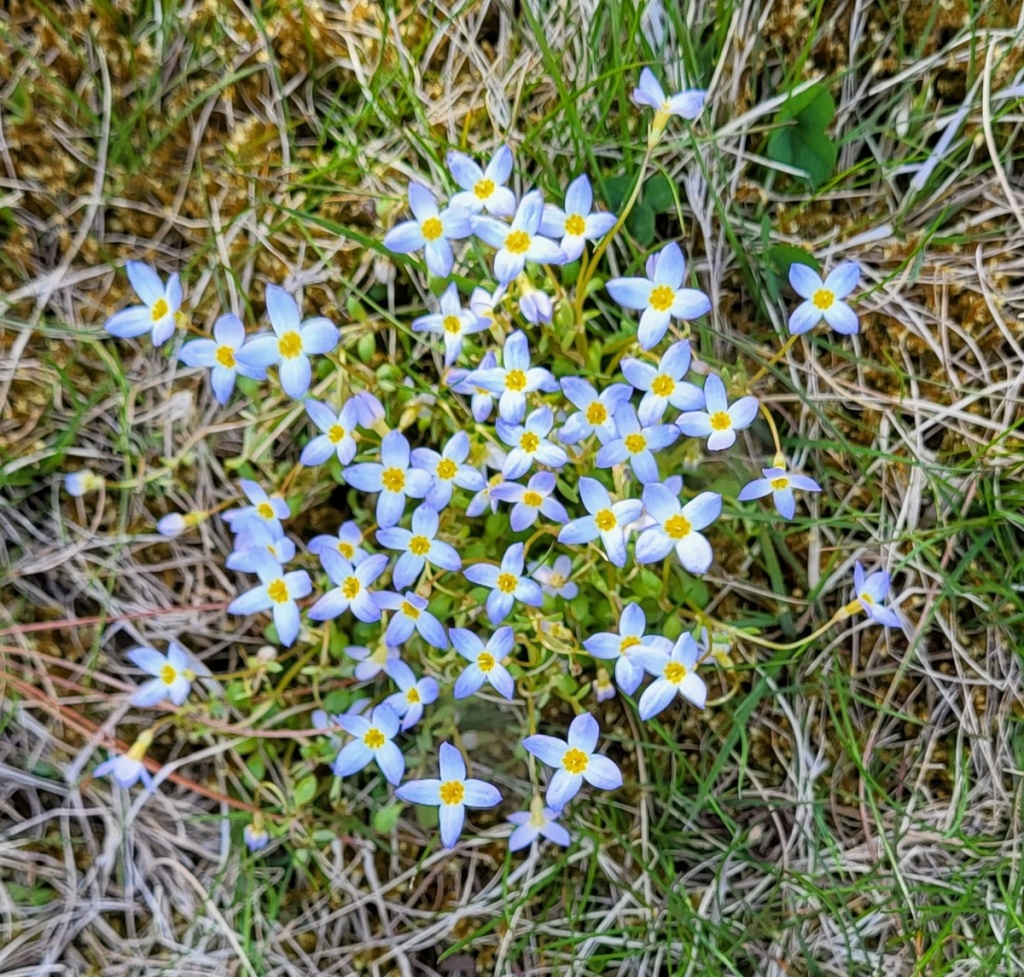
Bluets have appeared so the game is on. The game is, how long will it take to find the darkest, bluest bluets? Some are almost white and others are a rich, dark blue but there are many millions of them and the trick is finding them. I don’t run around looking for bluets; when I happen upon them I just take a photo of those that I think might be darker than the ones in the last photo, so the photo above is the one to beat.

Violets have appeared along with the bluets as they often do. I was happy to see lots of white ones in this group. Some believe the whites to be color variants of the purples and others believe they are a distinct species. It doesn’t matter to me what the cause might be. I just enjoy their cheery spring beauty.

Yellow violets are the rarest of all in my experience, but a few years ago I found one in a local park. Since then that one plant has spread into several, so I can now count on seeing them each spring. Provided they aren’t weeded out, that is.

If you’ve seen bluets and violets in bloom then it’s a fair bet that you’ll be seeing wild strawberry blossoms as well. It was a cold morning and the sun hadn’t yet had a chance to dry the dew off these flowers before I came along with a camera, but a night in the 20s hadn’t seemed to hurt them any.
The strawberries that these plants will produce are barely bigger than an aspirin but they have an intense flavor that store bought fruit can’t match. A handful of the warm berries on a hot summer day is delicious. Wild strawberry roots were one of the ingredients in the spring tonic used by native Americans in this part of the country. They believed it purified the blood.

By the time I was born in the 1950s, trailing arbutus had been collected for nosegays to the point of near extinction. My grandmother loved these flowers and she always hoped that she would be able to show them to me but it never happened because we never could find any. She was born near the end of the 1800s and there were plenty of them then, so she could describe the way they looked and their wonderful fragrance well enough so when I finally found some years later, I knew immediately what they were. These days, though I couldn’t call them common, they’re making a good comeback. They should never be picked; not if you want to be able to show them to your own children and grandchildren.

Spring beauties haven’t yet carpeted the forest floor but they are working on it, as can be seen in this photo. They’ve been held back a bit by the cool, cloudy weather but that’s okay with me because this entire colony will be gone shortly after the trees leaf out. The odd thing about them this year is how most of them are white with pink stripes that are so faint they can hardly be seen. I’ve heard that the most colorful ones are those that grow in partial shade but I don’t know how true that is. These plants grow with a southerly exposure and get full sun all afternoon.

This is what I hope to see when I find spring beauties. Each flower is about the size of an aspirin so to get a good shot of one you have to at least get down on your knees.

The sharp eyed readers might have noticed trout lily leaves in amongst the spring beauties in the previous photos. That’s because the two like the same soil and exposure and they often co-mingle and grow side by side. This shot shows how the trout lily plant’s common name came about; its leaves are speckled like a trout’s body and the flower looks just like the much larger native Canada lily blossom. It’s nice to have plant names that make perfect sense once in a while.

Trout lily flowers nod at the ground so this is a hard shot to get. Each plant has just one flower and they can take seven years from seed to flower. Large colonies like the one I found this flower blooming in can be hundreds of years old, so there’s a good chance that it was here before Keene, New Hampshire was even thought of.

Sedges are starting to flower and the flowers of sedges like Pennsylvania sedge and plantain leaved sedge look a lot alike. The buttery colored male flowers appear at the top of the stem, which is called a culm in the world of sedges, and the wispy pure white female flowers usually appear lower down. I say usually because this year I’m seeing female flowers growing along with the male flowers at the top of the culm, as can be seen in this shot. I don’t know if this is “normal” or not but I can’t remember ever seeing it before.

Fern fiddleheads are suddenly popping up everywhere, as they usually do. These cottony fiddleheads belong to cinnamon ferns. An odd thing I noticed is how, because we had so little snow, the stalks from last year didn’t decompose as they usually do after spending months under the snow. The seedlings seen in this shot are those of jewelweed.

Christmas fern fiddleheads are also up. These fiddleheads are very hairy and scaly, and silvery. They’re quite different from other fiddleheads and once up they unfurl quickly. Christmas ferns get their common name from the way the first Europeans brought the evergreen fronds inside during the cold, snowy winters so the long days of sitting inside waiting for spring would be easier to bear.

Elm seeds are ahead of maple seeds this year. When I see these seeds I think of my father, because our street was lined with 200 year old elms and when the seeds fell they clogged up the vents on his car. That used to get him riled up because once hundreds of them were down inside the vents they were almost impossible to get out. The vents I’m speaking of are just below the windshield on the car’s exterior and are called cowl vents. If they get plugged up you get little to no fresh air inside the car. Back then they were a lot harder to clean out than they are today.

Colorful striped maple buds are all over the trees now, and the bud sheaths are just starting to split, as can be seen here. Once the sheath splits the leaves appear, and before too long the tree will flower. These are among the most beautiful buds in a spring forest, in my opinion. The main bud is about as big around as a pencil and might reach 2 – 2.5 inches in length.

These buds backlit by the sun clearly show the darker leaves within. To see the sun shining on trees full of buds is something you don’t forget right away, because sunlight makes them glow.

Male box elder stamens are hanging at the ends of their long filaments now, and soon all it will take is a breeze to get them to release pollen. It seems like many plants are releasing pollen right now.

For the first time since I started this blog I’m able to show both the male and female flowers of box elder in the same post. What usually happens is, the male flowers appear and the after a space of maybe a week and a half to two weeks the leaves start to appear, and along with them come the female flowers, which are the beautiful long, lime green, sticky pistils seen here. They might look strange compared to the flowers of other trees but box elders grow lots of seeds, so they get the job done.

This robin was making a puddle look like someone had spilled dry ice in it. Every part of its body was in frantic motion except its head.

I saw a painted lady butterfly land in the grass and it was a good thing I did because it was very hard to find again once I took my eyes off it. Green looks orange to me sometimes so it just disappeared. I had to use landmarks like leaves, dandelions, and stones to find it again. It isn’t the first butterfly I’ve seen this spring but it’s the first one willing to pose. Its official name is now the American painted lady butterfly, I’ve read. As opposed to the English painted lady, I suppose.

I found this flower on a shrub at the local college. I believe it was a purple leaved sand cherry. The flowers were smallish at about the size of a dime, or about .70 inches. The red anthers were very pretty, I thought.

Bradford pear is an ornamental pear that is planted for its beautiful flowers. Beautiful to see, that is. You don’t want to put your nose in one, because its scent has been compared to everything from spoiled fish to an open trash bin. I smell fish when I get near it so I get a quick shot and move on. These flowers are larger than those of the sand cherry at about the size of a quarter, or .95 inches.
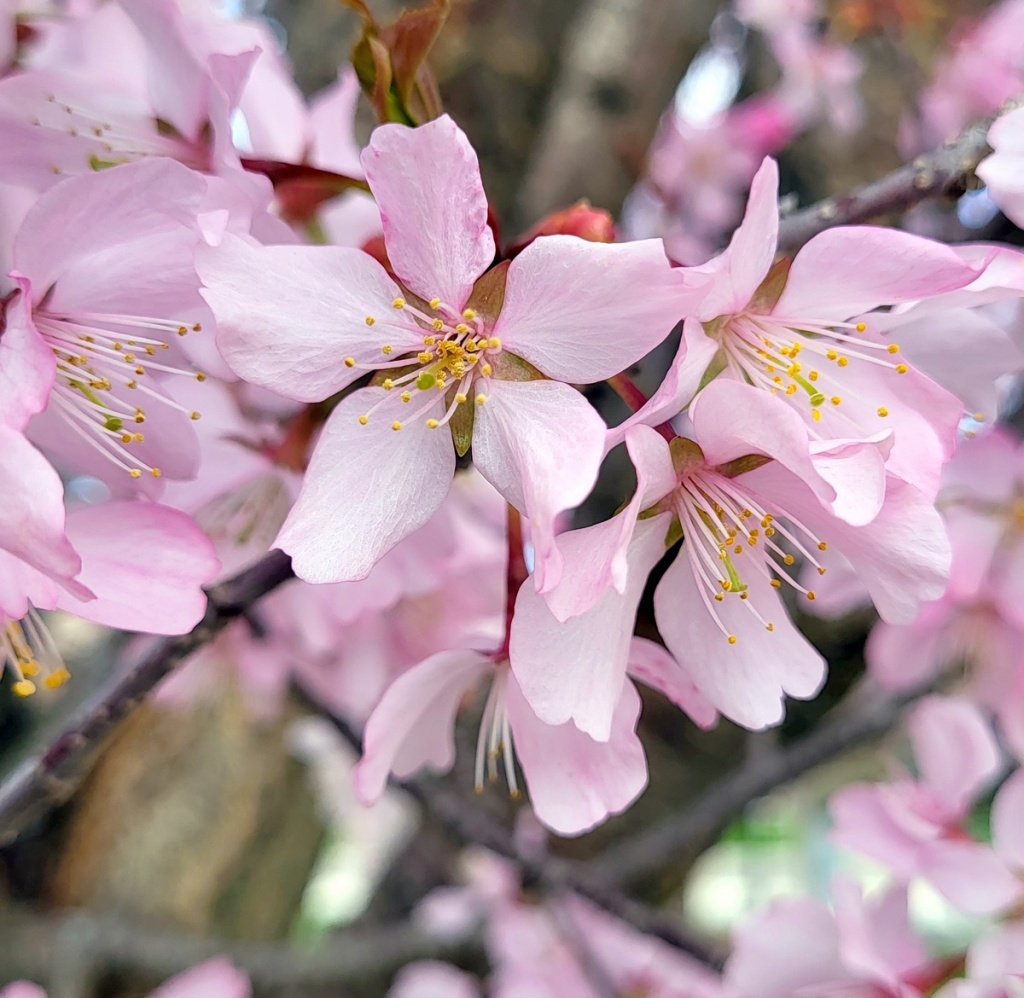
Ornamental cherries are still blooming beautifully this year. Some trees look as if they couldn’t hold even one more flower. These flowers are also about an inch in diameter. I discovered this year that bees love them. These trees were covered with bees and I thought for sure I’d be stung while getting photos but no, they were more interested in the flowers than in what I was doing.

Native shadbushes (Amelanchier) are blooming as well. They’re actually more tree than bush and cultivated varieties of the wild native are used ornamentally these days. Compare the flowers of the cultivar with those of the wild plant and you’ll see the same things. The main difference is, cultivars will often have more of them. They’re used extensively at the local college.

It’s amazing how plants are responding to the mild winter we had. Everything seems more vigorous and robust, including these beautiful blue grape hyacinths. Grape hyacinths aren’t related to either grapes or hyacinths. They’re actually in the same family as asparagus.

There are many beautiful tulips blooming right now and not too long after them will come the Tradescantias, which I’m always happy to see.

Pulmonaria have just started blossoming. Another name for the plant is lungwort. Lungwort was once considered dangerous because the grey spots on its leaves were associated with an infected lung. Later, it was used to treat lung disorders. The scientific name Pulmonaria comes from the Latin pulmo, meaning lung. This particular plant is odd in the way the flowers start out pink and then turn purple. Odd in my experience, anyway.

I looked for lilac flowers and thought I was too early until I saw these buds just about to open down low on a bush. It won’t be long now.

We’re still having some cold nights down into the 20s F., and that’s holding things back a little. Many trees don’t have that fresh burst of spring green color yet but it is happening slowly, as this Ohio buckeye shows; it’s a sign of things to come. Spring is an amazing time of year so I hope everyone is able to get out and enjoy it.
Spring in the world! And all things are made new! ~Richard Hovey
Thanks for stopping in.























